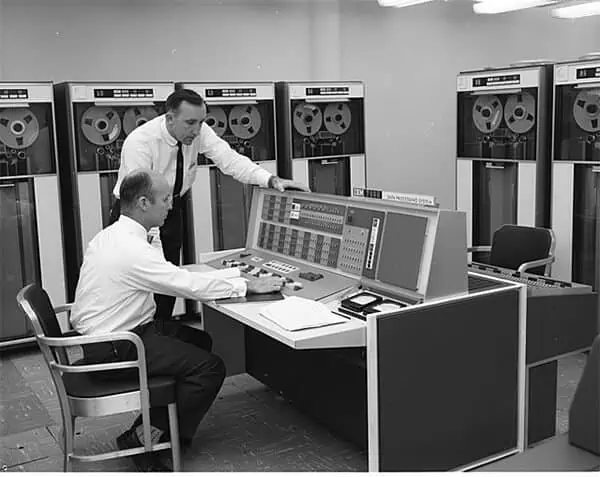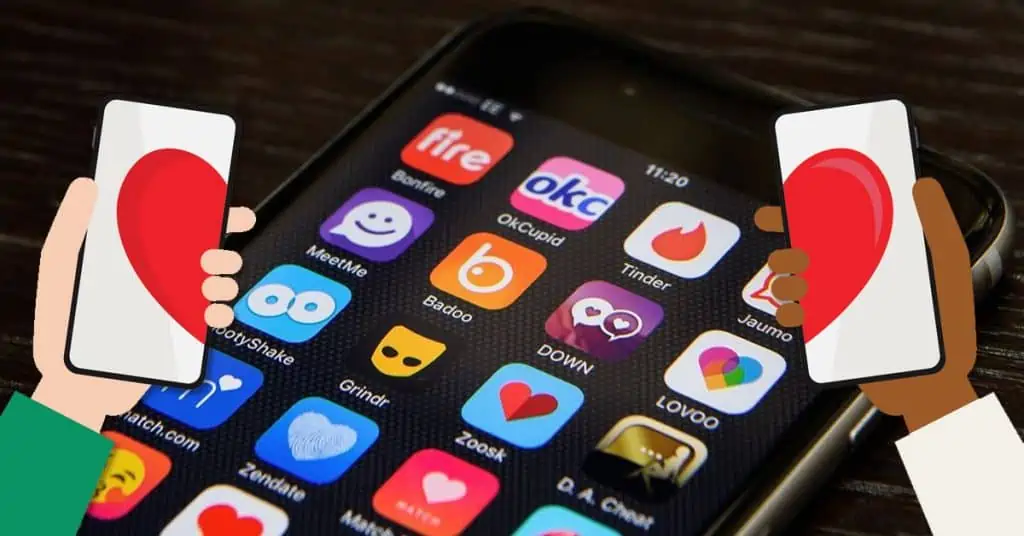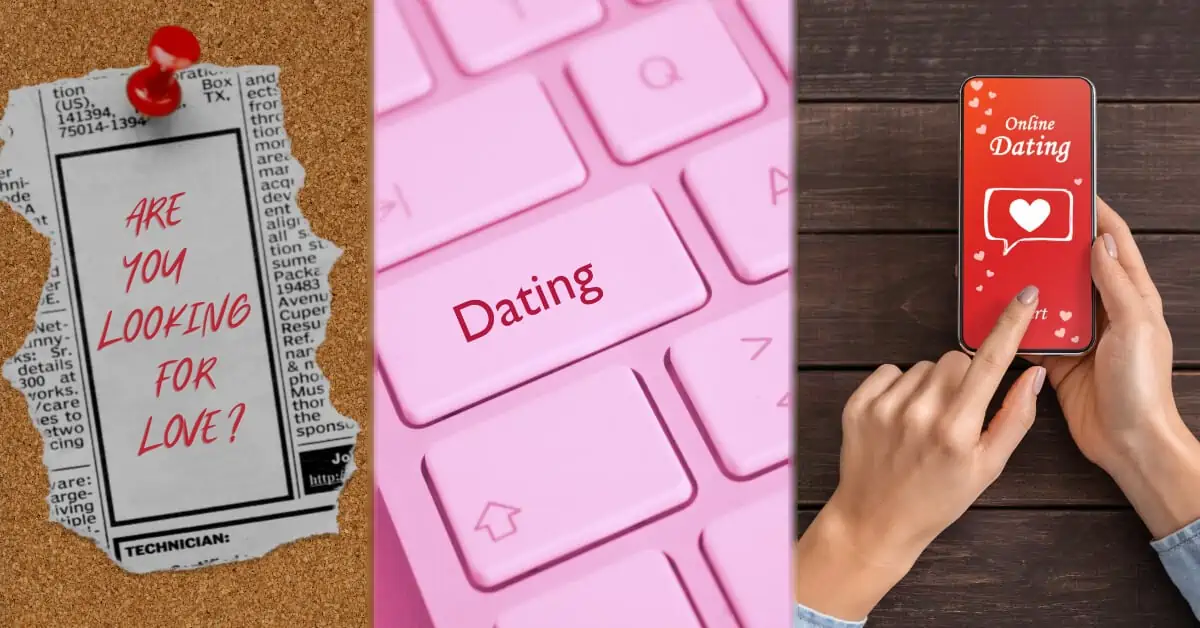It feels like dating apps have been around since the dawn of time because of how ubiquitous they are in the modern age. Over 323 million people have used dating apps before, and their accessibility is not stopping any time soon.
But have you ever stopped scrolling through the apps and wondered how exactly dating apps started in the first place? I know, probably not something you’ve thought of before. Yet, the history of online dating is as fascinating as the apps themselves.
While many people would assume that dating is a man’s game in a man’s world, you might be shocked to learn that the first major steps taken in online dating were those done by women pioneers.
The Beginning of Online Dating — Newspaper Ads
People have been dating, courting, and romancing each other since they could walk and communicate. While the methods by which they can do all these things have changed significantly throughout the ages, dating, in general, has mostly stayed the same.
But the idea of online dating actually started long before the internet was even created. In 1727, Helen Morrison wrote a personal advertisement for the Manchester Weekly Journal telling the world she was looking for a husband. This was the first time a woman had used a public platform and forum to find love, but it was far from the last.
Since then, newspapers, Craigslist listings, and even Instagram stories that contained a bit too much personal information became an easy way to declare to the world that you were single and ready to mingle. Side note: if you’re ever very bored, head to Craigslist, put in your location, and look at ‘Missed Connections.’ You’ll find a slew of people trying to meet up, find a new partner, or do any number of different things that someone might want.
But back to the original storyline, Helen Morrison’s personal ad was the first time that a woman had ever run anything quite as scandalous in the history of news. Now mind you, men had been running personal ads for about thirty years by then, but never a woman.
As it happens, Morrison was later committed to an asylum for a month by the mayor because of her raucous behavior. This was to make it publicly known that women were not to advocate for themselves in the newspapers and be their own matchmakers. Four weeks in a mental institute will teach women to speak for themselves! But this was not the last time women would place personal ads; Morrison had started a dating revolution. Little did she know she would be the catalyst of this entire story.
Four weeks in a mental institute will teach women to speak for themselves! But this was not the last time women would place personal ads; Morrison had started a dating revolution. Little did she know she would be the catalyst of this entire story.

After Morrison went out on a limb to post her ad, women started posting anonymous ads left and right. The newspapers said they couldn’t serve women who were ‘in a certain situation,’ but they could help new singles — the widows, the divorcees, or those who were in an unhappy or unhealthy relationship. Does this concept sound familiar to you?
These newspapers that were doing a service to these women were far-reaching and covered huge cities like Manchester and London.
The first newspaper ads were often full of people who announced that they wanted to be married and would often attempt to climb the social ladder while doing so.
One ad for a woman that ran in the General Advertiser in March of 1748 was for a “lady, genteely dressed” who was seen leading “a string of beautiful stone horses through Edmonton, Tottenham, and Newington.” The ad said, “This is to acquaint her, that if she is disengaged and inclinable to marry, a gentleman who was on that occasion is desirous of making honorable proposals to her; in which state if he be not so happy as to please, he will readily purchase the whole string for her satisfaction.” This is the kind of courting I would like, honestly.
The Next Step — Computers and Love
Two and a half centuries after the first woman’s personal ad was published in the newspaper (and she was sentenced to an asylum because of it), the 1960s saw a woman named Joan Ball found the St. James Computer Dating Service. This was the true beginning of online dating. The dating service was the first computer-assisted dating company ever made.
But true to form, Ball was later wrongfully sent to a mental hospital for standing up to her mother’s abuse. Many publications that discuss the history of online dating and its roots do not mention Ball and her contribution to the dating world because of this wrongful sentencing.
One year after Ball founded the computer program, in 1965, Jeffrey Tarr founded a second computer dating company. This was purely for selfish reasons, as he wanted a way to meet more women that weren’t just on his college campus. He started a company called Operation Match that made $270,000 in the first year, which would be over $2.2 million today. People wanted to try some form of online dating and dating with ease and were eager to spend money doing so.
Nearly two decades later, in 1984, the Matchmaker Electronic Pen-Pal Network became the first online dating network. Matchmaker was the first version of a dating app, so it had some kinks, but for the most part, it was pretty well-structured. The format began as a bulletin board system but then grew to fourteen boards across many of the major cities in America.
This is where some of the most popular dating websites, like Match.com and OkCupid, got their main idea but grew from what Matchmaker lacked. For example, these new and improved websites promised to match you up with people who were not only close to your location, like Matchmaker would, but who would also share some of your favorite hobbies and interests. This way, you wouldn’t be matched with every eligible bachelor in LA, but every eligible bachelor who also loved swimming, fishing, and the occasional pickleball tournament, just like you!
Gene Shalit, now the Today Show film and book critic, but at the time, a reporter, wrote about Tarr and the new-fangled idea of online dating for Look magazine.
Shalit writes, “A nationwide dating spree is on. Thousands of boys and girls who’ve never met plan weekends together, for now that punch-card dating’s here, can flings be far behind? And oh, it’s so right, baby. The Great God Computer has sent the word. Fate. Destiny. Go-go-go.”
Operation Match was very obviously the first design for a dating program. Fellow students would fill out a two-part pamphlet that had 75 questions. They were nothing if not thorough, but if people struggle to fill out their less than 120 character bios, I cannot imagine the turnout rate for those who wanted to try this dating idea but were then met with an exam of sorts. The questions ranged from your lifestyle and beliefs to what you were looking for in your ideal mate.
All the answers would be compared and contrasted with the other respondents’ answers. Then the computer would supposedly produce a match for you. After completing the 75 questions, mail the pamphlet back, and have the Matchmaker employees convert your answers to punch cards on an IBM 7090 computer. Then, they’d sort the cards based on some basic criteria — location, religion, age, height; Tarr unveiled in a documentary that some cards were also lumped together at random. When you’re punching thousands of cards and sorting them by hand, you have to have some fun with it, we suppose.
Operation Match VP and Tarr’s fellow Harvard alum, David Crump, said that the computer was the real star of the show. Crump says, “It had a legitimacy that maybe your buddy Tom or your girlfriend Sarah would not have in saying ‘this is the perfect girl or guy for you.’”

After all the initial excitement died down, people began to realize that Operation Match was still just a little ahead of its time.
Online Dating with a Side of Backstabbing
But let’s go back to Joan Ball because she’s been in the shadows for too long. Ball was trying to create a respectable company whose sole desire was to aid people in their search for love. Finally, she got the recognition she deserved. After telling some tabloids that her business model had been stolen, Com-Pat received almost two thousand hopeful and eager applications. Whenever someone who found success would call Ball’s office to thank her, she would ask them to call the press instead. While this was a slowly growing thing because many people were not too keen on announcing that their relationship began in such a way, thousands of people in the United Kingdom found love through Joan Ball’s program.
Sadly, Joan Ball eventually sold Com-Pat to Dateline’s John Patterson for 5,000 pounds on the condition that he would pay the 7,000 pounds of debt the company had accrued.
But now the market was truly ready for an online dating program, and Patterson readied himself to give the people what they wanted. He switched gears (get it? Computer gears) and reimagined online dating as a more sexually forward service and even an adventure.
Dateline soon would phase out of popularity, but only after matching over forty thousand people with their happily ever afters, or at the very least, a couple of fun dates. However, the success rate could have been higher. Only about two thousand couples who met because of Dateline ended up getting married.
In the end, those who can’t do teach. Patterson died alone at the age of 51. He was found by his ex-wife and struggled for years in unhappy relationships and dealing with alcoholism.
Joan Ball also never married. Kenneth was her partner in work and life, but they eventually grew distant after years of putting their client’s needs first. Joan Ball would later read through the letters between her and Kenneth and realize that they never got together because they couldn’t communicate their feelings properly.
The Snowball Revolution of Dating Apps
Later, the internet would see a spike in usage during the 80s and 90s. 1995, Match.com launched the world’s first online dating website. This was what really took online dating to the next level. Finally, you can meet the love of your life in your pajamas.
Online dating has caused relationships that weren’t always promoted to skyrocket. With the rise of online dating came the increase in success for interracial couples and same-sex relationships as well.
65% of same-sex relationships begin online, making online dating the number one hub for all new connections. Even though the beginning of online dating and Match.com were primarily focused on same-sex attractions, 2009 saw the advent of Grindr and the sexual revolution it caused. Grindr was revolutionary for the LGBTQ+ community because it created a safer environment for those looking for a relationship. Grindr was not the first gay dating app; it was the first to use geolocation technology.

In 2012 Tinder broke the internet in a whole new way. Tinder was the app that was perfectly geared toward single millennials. Gone were the days when Match.com was groundbreaking; now, society and technology were deep into the app world, and we needed to find our true love not only from the comfort of our own homes but also with ease from our own phones.
While Tinder was groundbreaking for the time, it remains one of the most popular dating apps, with users spending an average of ten hours a week on the app. This number has more than tripled since 2013.
The Current Day
Even though some people are still not sold on the idea of online dating, the numbers don’t lie. Whether or not you are personally on dating apps or have been, you probably know multiple people who have downloaded Tinder, Bumble, or Grindr.
And because of the pandemic and the isolation and lockdown that occurred, online dating’s popularity and the way it connects people have grown exponentially in the past few years. The Proceedings of the National Academy of Sciences published a new study that found that heterosexual couples are more likely to meet their romantic partner online than through personal contacts and connections.
A study in 2019 saw online dating as the second most popular way to meet your romantic partner. That chance has only increased as technology has continued to refine and learn from itself. Now, if you need a quick fix or even a long-term partner, online dating is the easiest and more ubiquitous way to find your happily ever after.
So, if you’ve ever wondered about how the phenomenon of online dating began, you now know. It’s a tale that started with a woman getting thrown in an insane asylum, continued with another woman getting ripped off on her dating algorithm later, and ended with the rise of dating apps becoming as popular as dating itself. So next time you open up your dating app, you can appreciate the long and arduous journey it took to get them here and popular.
